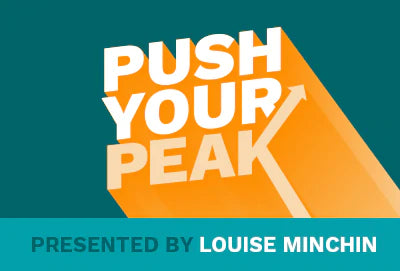Your Cart is Empty
wattbikes
accessories & service
training apps
news & information
How to Get Better at Climbing Cycling
May 05, 2016 6 min read
Get better at cycling with our top tips. The Giro d’Italia’s iconic climbs are long, steep, daunting and legendary for the punishment they dish out. The riders faced the mighty Monte Zoncolan in 2021, regarded as the hardest climb in Europe; Monte Jafferau with its double-digit slopes; and Colle delle Finestre, famous for beauty, brutality and drama. Want to learn how to match the pros and get better at climbing? Read our ways to become a better climber before you head out.
Table of Contents
6 Ways To Improve your Cycling Climbing
Many cyclists will be inspired by the professionals to take on a mountain pass or two. If you’re one of them, and you’re adding a mountain climb to your itinerary, we’ve put together our top tips to get better at climbing.
1. Improve Your Power to Weight Ratio
A perfect place to start when trying to improve your climbing is to calculate and optimise yourpower to weight ratio. If you’re heavier than your fellow climbing companions, you’ll need to produce more power than them to tackle the hill at the same pace.

There are two main ways to improve your power to weight ratio.
Firstly, think about your body weight - are you carrying a few extra pounds? If so, these could be hampering your efforts while trying to get better at climbing. Aim for a healthy balanced diet and consider theWattbike weight management plan to help you get off to the best possible start.
Secondly, if you’re at optimum bodyweight, consider implementing some power specific training sessions to improve your power.
2. Ride & Repeat
The only way to truly replicate the sensation of climbing is to climb. Seek out your local hills and ride them over and over again, even if they’re short. As the road tilts up, your body starts to undergo a series of physiological reactions which may well leave you regretting ever heading outside, but in the long term it’s what you need.
Compared to riding on the flat, seated climbing recruits your glutes, quads and calves more than when you’re spinning along on a level. As you climb against a gradient, gravity tries to pull you back, so you have to use more muscles to keep moving forwards. Over time this builds strength and endurance, which is exactly what climbers need. And the more you climb, the better you’ll become.
3. Have A Pacing Strategy
The smart way to climb a mountain is to pace yourself. We’ve all made the rookie mistake of setting off like a rocket only to come to a standstill half way up. Control is the key. Ease yourself into a climb by starting with your heart rate low. Avoid the temptation to push down hard on the pedals and instead try to spin your legs; pedalling at a higher cadence lessens the tension and load on the leg muscles. In turn, this reduces the fatigue and that early hit of lactic acid that can kick in when you start to climb.
Find your own pace and gradually increase the pressure on the pedals. Use the distance markers at the side of the road (you’ll find them on most European climbs) to judge when to up your speed and finish faster than you started.
4. Learn How to Descend
Many a race has been won with a skilful and daring descent. Many of the peloton’s best climbers are the one who crest the summit and then drop down the other side like a stone – take Nibali, Sagan, or Irish legend Sean Kelly. The key to becoming a good descender is progression. Don’t think you need to start by launching yourself down Monte Etna.

First, master the art of cornering on the flat, by:
- Noticing how you approach the bend.
- Finessing when to brake (before, not during, and with both brakes).
- Learning how to ride out of the corner.
Then try to incorporate this on a short hill, of say 5km, with steep sections. Gradually move slightly out of your comfort zone on a steeper, longer hill and build up the distance; the Giro’s descents can be upwards of 25km-long. If you’re nervous, the natural instinct is to hold your breath, so try to stay relaxed and don’t tense up.
5. Extend Your Gears
En route to the summit of Monte Zoncolan, the riders will have to grapple with gradients in excess of 20%. Ahead of the stage, team mechanics will set to work mounting smaller gears so their riders can make it to the top. If you find yourself running out of gears when you’re climbing, consider adjusting or changing your drivetrain.
A compact chainset (such as 50/34t), mid chainset (52/36t), even a super compact chainset (48/32t) offers lower gears than a traditional standard chainset. A wide-range cassette is also a good bet, even if you’re riding hilly sportives and not a Giro climb.
6. Think About Technique
An age old debate when it comes to getting better at climbing is should you climb seated, or standing? We are big advocates of staying seated when it comes to climbs for three main reasons:

- More aerodynamic - When seated, the frontal drag area is smaller than if you were standing, that essentially means you require less power to move your mass (i.e. body and bike) forwards.
- Ensure an effective pedal stroke - Standing when you climb results in pushing power at the front of the pedal stroke, which has a negative impact on the smoothness of your pedalling technique.
- Steadies your heart rate - Staying seated reduces peaks and troughs in your heart rate. For most riders, it's more effective to choose an appropriate gear and sit in the saddle tapping out a good rhythm with a smooth and balanced pedal technique as opposed to jumping out of the saddle and seeing your heart rate skyrocket (and having to slow again for a period of recovery).
7. Aim for Altitude
At heights greater than 1,000m the air starts to become less compressed, or less dense. This means there are fewer molecules of oxygen available to breathe in. So, when the riders point their bike skywards for the summit of the Colle delle Finestre, at a cool 2,178 metres (7,145ft) above sea level, they’ll be battling the steep slopes and a lack of oxygen too, especially once they climb above 1,500m (4,920ft).
The best way to train for riding at altitude is to go to the mountains and ride. Over time your body gets used to the lower level of available oxygen and adapts to become more efficient. One of the major adaptations to altitude is an increase in red blood cells, which means more oxygen can be carried in your blood. But for those without access to the Alps from their door, training in an altitude chamber helps get your body used to the demands of the high mountains.
8. Practice Makes Progress
A number of climbs in the Giro reach over 2000ft. If you’re taking on a climb similar to the pro’s you’ll need to get in plenty of practice beforehand to ensure you are up to the challenge. Practising before the big day will help you develop three of the key skills needed to successfully tackle the mountains:

- Pacing - For long climbs it’s important to select the right pace to ensure you don’t find that halfway up the hill you’ve been pushing yourself too hard. Practise your pacing during training on varying levels of hills, you can use cadence, heart rate or power training zones to help guide you to a sustainable pace.
- Gearing - The climbs of theGrand Tours are long, probably much longer than anything you’ve attempted before so you’ll need to practise your gear selection. Opt for lower gears than you think you’ll need and practice on the longest and hardest hills in your area. You may find you need to add a different chainset or rear cassette for a wider range of gears.
- Mental preparation - Climbs like those in theGiro d’Italia are tough and you’ll need to get into a good headspace to tackle them effectively. Mimicking the effort required for a long, slow, gruelling climb indoors can help you prepare mentally, as well as physically, for the challenge ahead.
Replicate Climbing with Indoor Cycling
Unless you live near a mountain range, it’s unlikely that you’ll train on climbs similar to the ones faced in the Giro. To replicate the effort needed to conquer your climbs, try training indoors on a Wattbikeindoor bike trainer.
Everybody climbs hills differently and there are many factors which affect how quickly you will reach the top. Ride style, body weight, the gradient and length of the hill, and the weather, all play a part.
Don’t simply try to imitate all these factors on asmart bike by simply cranking up the resistance and going for it. Think about the length and type of hills you’ll be facing. Then, replicate a power output, cadence and smooth technique that you can maintain within your personal training zones to tackle them.
This is particularly key on shallower gradients and longer climbs, where that gradient can continue for several kilometres.
Improving Cycling Performance with Wattbike
At Wattbike, improving your cycling performance is easier than ever thanks to ourcycling data. You’ll find tailored insights to your training every time you ride. Whilstperformance tests andtraining programmes will help you benchmark your progress and get close to your targets.
Also in Training

Fitter for winter in 5 steps
October 18, 2023 2 min read
Training is tough, there’s no two ways about it. But getting started shouldn’t be – here’s 5 steps to making the most of your indoor riding this winter, and partner your training with the Wattbike Atom.
Read More
Ride the Tour de Wattbike with Alex Dowsett
June 30, 2023 6 min read
Get ready to chase yellow with Pro Rider Alex Dowsett. 8 new workouts now on the Wattbike Hub.
Read MoreUNLOCK YOUR EXCLUSIVE DISCOUNT!
SUBSCRIBE TODAY TO RECEIVE YOUR UNIQUE WELCOME SAVING DIRECTLY TO YOUR INBOX.











